Comments / Questions (41)
![]() Ia Koyno wrote:
Ia Koyno wrote:
Hi, I can't understand the logic behind the sleeve cap here. I'm knitting the smallest size and according to the pattern, I should knit up 53 stitches up from the bottom of the armhole and up the front to the shoulder and 32 stitches from the shoulder and down the back. Shouldn't it be the other way around - more stitches at the back? Also in the lessons section, there is an explanation for a European shoulder (sleeve) with a different logic. I'm confused. Please explain it to me! Thank you!
18.03.2025 - 09:29DROPS Design answered:
Dear Mrs Koyno, as armhole is longer on front piece (25 cm) than on back piece (15 cm) you will pick up more stitches along front than along back piece. This video shows how to pick up stitches and how to work the short rows (remember to follow the inscructions for your size). Hope it can help. Happy knitting!
18.03.2025 - 16:16
![]() Mimmi Hansson wrote:
Mimmi Hansson wrote:
Jag förstår inte hur ökningen för halsen efter de stickade 7 cm på framstycket ska ske. Vad menas med ” När arbetet mäter 7 cm från där du stickade upp maskor, ökas det maskor mot halsen. Öka i början av varje varv från rätan som beskrevs ovan, det ökas sedan 3 maskor (det ökas bara från rätsidan). Öka 1 maska totalt 4 gånger = 38-42-44-48-50-54 maskor.”
28.01.2025 - 20:11DROPS Design answered:
Hej Mimmi. Har du sett att vi har flera videor på hur man stickar europeisk axel? Kanske t.ex. denna video kan hjälpa dig att förstå hur du ska göra (det är inte samma maskantal men den kan nog hjälpa dig att förstå ändå). Mvh DROPS Design
29.01.2025 - 10:42
![]() Jane Stevenson wrote:
Jane Stevenson wrote:
Forest Mystery Drops 243-11. Please can you advise where you measure from on the Front before joining front and back. pattern says ‘continue with stocking stitch back and forth till front piece measures 25-26- etc. Do you mean measure from knitted up stitches? Thanks
16.01.2025 - 12:12DROPS Design answered:
Dear Mrs Stevenson, yes, measure front piece from the stitches knitted up for shoulders on front piece - see also this lesson or this video. Happy knitting!
16.01.2025 - 17:34
![]() Amelie wrote:
Amelie wrote:
Hallo, ich habe ein Frage zum Stricken der Ärmel. Ich habe jetzt die verkürzten Reihen gestrickt. Wenn ich nun in Runden stricke ohne die Maschen aus der unteren Ärmelseite aufzunehmen entsteht da ein Loch. Ist das so gewollt, dass man es dort am Ende zunäht oder muss ich die Maschen dazwischen aufnehmen?
11.01.2025 - 23:01DROPS Design answered:
Liebe Amelie, nach der letzten verkürzten Reihen stricken Sie bis unter die Ärmel, hier beginnen jetzt die Runden. Viel Spaß beim Stricken!
13.01.2025 - 09:01
![]() Nicole wrote:
Nicole wrote:
Bonjour, dans la partie Dos&Devant, 2eme chapitre, je ne comprends pas « tricoter 0-0-2-2-0-2 mailles endroit « A quoi correspondent les 0 ? Comment tricote t on ces mailles ?
22.10.2024 - 16:26DROPS Design answered:
Bonjour Nicole, quand il y a un "0", ces indications ne concernent pas la taille, autrement dit, vous passez directement à l'indication suivante, soit 2 mailles envers après les 2 m point mousse dans les tailles S, M et XXL. Bon tricot!
22.10.2024 - 16:50
![]() Barbara wrote:
Barbara wrote:
What cast off technique do you suggest for the front and back pieces? i tried the sewn cast off but it wrinkles because of the ribbing. thank you
12.10.2024 - 17:28DROPS Design answered:
Dear Barbara, here you can find a few methods to cast off in rib stitch: https://www.garnstudio.com/video.php?id=1686&lang=en. Happy knitting!
13.10.2024 - 23:20
![]() Peggy M wrote:
Peggy M wrote:
I'm confused as to where I start the charts. Do I read them bottom to top? And do I alternate from right to left on right side rows and left to right on wrong side rows? The down arrow =knitting direction has me confused.
21.09.2024 - 05:59DROPS Design answered:
Dear Peggy, the charts are read from bottom to top and then from right to left on right side rows and from left to right on wrong side rows. The knitting direction arrows are for the schematic below the charts. You can find more information about charts here: https://www.garnstudio.com/lesson.php?id=68&cid=19. Happy knitting!
23.09.2024 - 00:44
![]() Paulette Pol wrote:
Paulette Pol wrote:
XL, devant : après avoir monté les 35 mailles pour l'encolure, il faut travailler pendant 29 cm. J'ai du mal à comprendre à partir de quoi on doit mesurer ces 29 cm. Sur la vidéo, vous mettez un marqueur avant les petites augmentations de l'épaule pour l'encolure. Est-ce à partir de ce marqueur-là que l'on doit mesurer? C'est ce qu'il me semble, mais j'ai de gros doutes. Merci de me corriger si je me trompe.
11.08.2024 - 04:41DROPS Design answered:
Bonjour Mme Pol, ces 29 cm sont mesurées à partir des mailles relevées pour l'épaule, retrouvez cette mesure dans cette leçon, 6ème photo. Bon tricot!
12.08.2024 - 08:09
![]() Anita wrote:
Anita wrote:
Bij het patroon forrest mystery begrijp ik de uitleg niet . Wat wordt er bedoeld met de cijfers 0 0 2 2 0 2 kan u dit mij uitleggen?
05.07.2024 - 14:05DROPS Design answered:
Dag Anita,
Het eerste cijfer geldt voor de eerste maat, het tweede cijfer voor de volgende maat, enzovoort. Als er een nul staat in de maat die breit kun je dus die informatie overslaan en verder gaan met de volgende informatie in de beschrijving.
07.07.2024 - 09:30
![]() Birgit Jessen wrote:
Birgit Jessen wrote:
Hallo! Ich bin jetzt da wo rechtes und linkes Vorderteil zusammen auf eine Nadel kommen (mit Halsausschnitt in der Mitte), da heißt es in der Anleitung: Dann glatt rechts und im Muster wie zuvor in Hin- und Rück-Reihen stricken. In dieser Weise weiterarbeiten, bis die Arbeit eine Länge von 25-26-28-29-30-31 cm hat, nach einer Rück-Reihe enden. Von wo werden die 26 cm (bei Größe M) gemessen? Vom Halsausschnitt? VG Birgit
04.05.2024 - 17:32DROPS Design answered:
Liebe Frau Jessen, die 26 cm messen Sie an der Kante beim Armloch, vom Anfang der Schulter an; siehe auch 14. Foto bei dieser Lektion (15 cm in der Lektion). Viel Spaß beim Stricken!
06.05.2024 - 08:12
Forest Mystery |
|||||||||||||||||||||||||
 |
 |
||||||||||||||||||||||||
Knitted jumper in DROPS Lima. The piece is worked top down with European/diagonal shoulders, lace pattern and split in sides. Sizes S - XXXL.
DROPS 243-11 |
|||||||||||||||||||||||||
|
------------------------------------------------------- EXPLANATIONS FOR THE PATTERN: ------------------------------------------------------- INCREASE TIP FROM RIGHT SIDE: Increase to the left AFTER A.1 or 3 stitches by neck: Use left needle to pick up thread between 2 stitches from row below, pick up thread from front and knit stitch in back loop. Increase to the right BEFORE A.2 or 3 stitches by neck: Use left needle to pick up thread between 2 stitches from row below, pick up thread from behind and knit stitch in front loop. INCREASE TIP FROM WRONG SIDE: Increase to the left AFTER A.2 Use left needle to pick up thread between 2 stitches from row below, pick up thread from behind and purl stitch in front loop. Increase to the right BEFORE A.1: Use left needle to pick up thread between 2 stitches from row below, pick up thread from front and purl stitch in back loop. GARTER STITCH (worked back and forth): Knit all rows. 1 ridge = knit 2 rows. DECREASE TIP (for sleeves): Decrease 1 stitch on each side of the marker-thread as follows: Work until there are 3 stitches left before the marker-thread, knit 2 together, knit 2 (marker-thread sits between these 2 stitches), slip 1 stitch knit-wise, knit 1 and pass the slipped stitch over the knitted stitch. ------------------------------------------------------- START THE PIECE HERE: ------------------------------------------------------- JUMPER – SHORT OVERVIEW OF THE PIECE: The top of the back piece is worked back and forth until the armholes are finished. Stitches are knitted up along each back shoulder for the front piece, stitches are increased for the neck and the front piece is worked back and forth until the armholes are finished. The 2 pieces are joined and the body worked in the round as far as the split in each side. Stitches are knitted up around the armholes and the sleeves worked in the round with short circular needle/double pointed needles. The neck is worked in the round to finish. BACK PIECE: Cast on 39-39-43-43-47-47 stitches with circular needle size 4 mm and DROPS Lima. Purl 1 row from the wrong side. Work as follows from the right side: A.1, 15-15-19-19-23-23 stocking stitches, A.2. AT THE SAME TIME increase AFTER A.1 (from the right side) and BEFORE A.2 – read INCREASE TIP FROM RIGHT SIDE. On the next row (wrong side) increase after A.2 and before A.1 – read INCREASE TIP FROM WRONG SIDE. Continue increasing from both the right and wrong side a total of 34-38-40-44-46-50 times. After the last increase there are 107-115-123-131-139-147 stitches. Continue with stocking stitch, A.1 and A.2 on each side. When you have worked 4 rows, insert 1 marker in each side. Continue the pattern until the piece measures 15-16-16-17-18-19 cm from the marker. Cut the strand, place the stitches on a thread or another needle, and knit the front piece as explained below. FRONT PIECE: Start on the left shoulder (when the garment is worn) – see sketch. Knit up 34-38-40-44-46-50 stitches inside 1 stitch along the left shoulder on back piece (knit up evenly between the neck and the marker in the side). Purl 1 row from the wrong side then work as follows from the right side: Work stocking stitch until there are 12 stitches left, A.2. When the piece measures 7 cm from the knitted-up stitches, increase for the neck at the beginning of each row from the right side as above, increasing after 3 stitches (increase only from right side). Increase 1 stitch 4 times = 38-42-44-48-50-54 stitches. Purl back from the wrong side, cut the strand and place the stitches on a thread or another needle. Work the right front shoulder as follows: Knit up 34-38-40-44-46-50 stitches inside 1 stitch along the back right shoulder (knit up evenly between the marker in the side and the neck). Purl 1 row from the wrong side, then work as follows from the right side: Work A.1, then stocking stitch to the end of the row. When the piece measures 7 cm from the knitted-up stitches, increase for the neck at the end of each row from the right side as above, increasing before 3 stitches (increase only from right side). Increase 1 stitch 4 times = 38-42-44-48-50-54 stitches. Purl back from the wrong side. Work next row from the right side as follows: Work as before over the 38-42-44-48-50-54 stitches on the right front shoulder, cast on 31-31-35-35-39-39 stitches for the neck, work as before over the 38-42-44-48-50-54 stitches from the front left shoulder = 107-115-123-131-139-147 stitches. Continue with stocking stitch and pattern back and forth until the front piece measures 25-26-28-29-30-31 cm, finishing after a row from the wrong side. Now join the front and back pieces for the body. BODY: Work the 107-115-123-131-139-147 stitches from the front piece, cast on 6-6-10-10-14-18 stitches (under the sleeve), work the 107-115-123-131-139-147 stitches from the back piece, cast on 6-6-10-10-14-18 stitches = 226-242-266-282-306-330 stitches. Continue in the round, with stocking stitch, A.1 and A.2 until the piece measures approx. 44-46-48-50-52-54 cm, measured from the top of the shoulder (finish after a repeat of A.1/A.2 in height). Place the last 113-121-133-141-153-165 stitches on a thread for the back piece and work the front piece back and forth as follows: Change to circular needle size 3 mm, work 2 GARTER STITCHES – read description above, knit 0-0-2-2-0-2, purl 2-2-2-2-2-2, knit 2-2-2-2-2-2, purl 0-0-0-0-2-2, knit 0-0-0-0-2-2, A.3, work stocking stitch over the next 87-95-103-111-119-127 stitches and increase 47-51-55-59-63-71 stitches evenly spaced (= 134-146-158-170-182-198 stitches after increases), A.3, knit 0-0-0-0-2-2, purl 0-0-0-0-2-2, knit 2-2-2-2-2-2, purl 2-2-2-2-2-2, knit 0-0-2-2-0-2 and 2 garter stitches = 160-172-188-200-216-236 stitches. Work back from the wrong side: 2 garter stitches, purl 0-0-2-2-0-2, knit 2-2-2-2-2-2, purl 2-2-2-2-2-2, knit 0-0-0-0-2-2, purl 0-0-0-0-2-2, A.3, * purl 2, knit 2 *, work from *-* until there are 15-15-17-17-19-21 stitches left, purl 2, A.3, purl 0-0-0-0-2-2, knit 0-0-0-0-2-2, purl 2-2-2-2-2-2, knit 2-2-2-2-2-2, purl 0-0-2-2-0-2 and 2 garter stitches. Continue this rib for 16 cm. Cast off. Work the back piece in the same way. LEFT SLEEVE: Using circular needle size 4 mm, knit up from the right side 53-55-59-61-63-65 stitches from the bottom of the armhole and up the front piece to the shoulder, then 32-34-34-36-38-40 stitches from the shoulder and down the back piece = 85-89-93-97-101-105 stitches. Insert 1 marker in the middle of the stitches picked up. Work now back and forth in stocking stitch with short rows for the sleeve cap, to gives a better shape to the sleeve. 1st row (from wrong side): work to 18 stitches after marker, turn. 2nd row (from right side): work to 18 stitches after marker, turn. 3rd row (from wrong side): work to 22 stitches after marker, turn. 4th row (from right side): work to 22 stitches after marker, turn. 5th row (from wrong side): work to 26 stitches after marker, turn. 6th row (from right side): work to 26 stitches after marker, turn. 7th row (from wrong side): work to the beginning of the row. Work stocking stitch back and forth until sleeve measures 4-4-5-5-6-7 cm, measure from where the stitches were picked up (all length are measured mid on top of sleeve). Now join the sleeve and continue in the round with short circular needle/double pointed needles size 4 mm. Insert 1 marker-thread at the beginning of the round (mid-under sleeve). Allow the thread to follow your work onwards. Start at the marker-thread and work stocking stitch. When the sleeve measures 6-6-7-7-8-9 cm, decrease 2 stitches under the sleeve – read DECREASE TIP. Decrease like this every 2½-2-1½--1½-1½-1 cm a total of 12-13-14-15-16-17 times = 61-63-65-67-69-71 stitches. Continue working until the sleeve measures 37-36-34-34-32-30 cm from the knitted-up stitches. There is approx. 10 cm left; try the jumper on and work to desired length before the rib. Knit 1 round and increase 20-18-16-23-21-19 stitches evenly spaced = 81-81-81-90-90-90 stitches. Change to double pointed needles size 3 mm. Work A.4 for 10 cm. Cast off a little loosely. The sleeve measures approx. 48-47-46-46-45-44 cm. RIGHT SLEEVE: Work the other sleeve in the same way but, when knitting up stitches, knit up 32-34-34-36-38-40 stitches from the bottom of the armhole and up the back piece, then 53-55-59-61-63-65 stitches from the shoulder down the front piece. Sew together the openings under each sleeve – see sketch. NECK: Start on one shoulder and knit up from the right side (inside 1 stitch) 104 to 120 stitches, using short circular needle size 3 mm. The stitch count must be divisible by 4. Work rib in the round (knit 2, purl 2) for 9 cm. Cast off. If you want a double neck, fold the neck to the inside and fasten with a couple of stitches by each shoulder. |
|||||||||||||||||||||||||
Diagram explanations |
|||||||||||||||||||||||||
|
|||||||||||||||||||||||||

|
|||||||||||||||||||||||||

|
|||||||||||||||||||||||||

|
|||||||||||||||||||||||||

|
|||||||||||||||||||||||||
|
Have you made this or any other of our designs? Tag your pictures in social media with #dropsdesign so we can see them! Do you need help with this pattern?You'll find 33 tutorial videos, a Comments/Questions area and more by visiting the pattern on garnstudio.com. © 1982-2025 DROPS Design A/S. We reserve all rights. This document, including all its sub-sections, has copyrights. Read more about what you can do with our patterns at the bottom of each pattern on our site. Have you finished this pattern? |
|||||||||||||||||||||||||











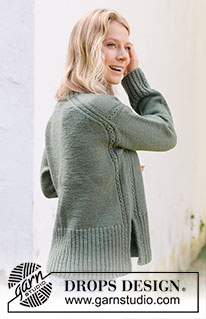










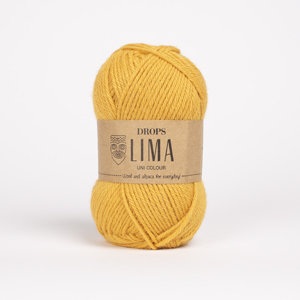
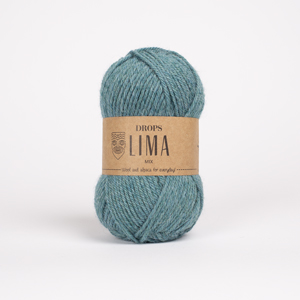



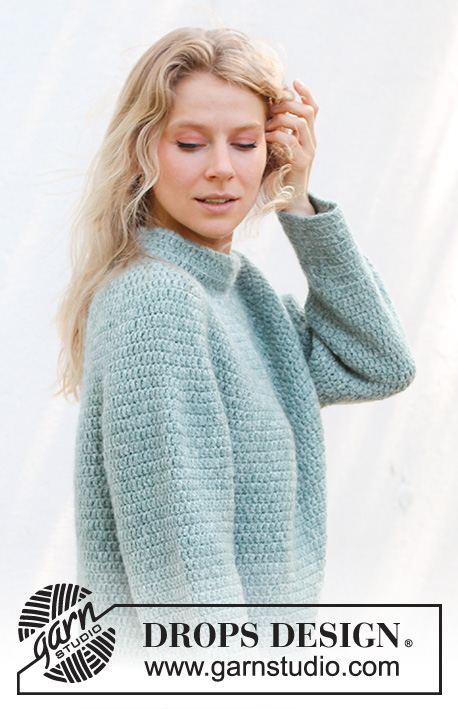









































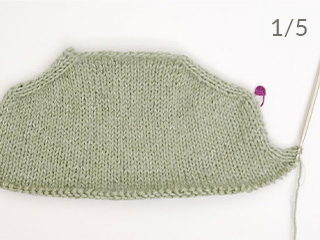
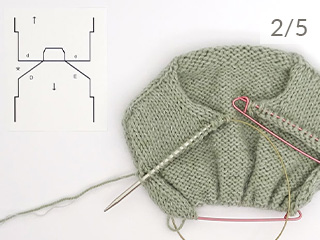
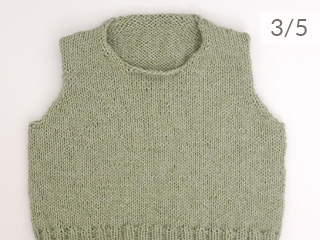
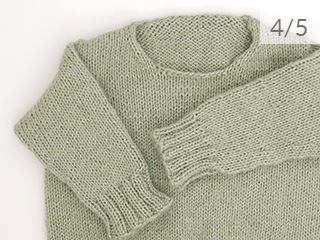





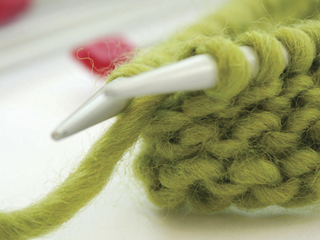






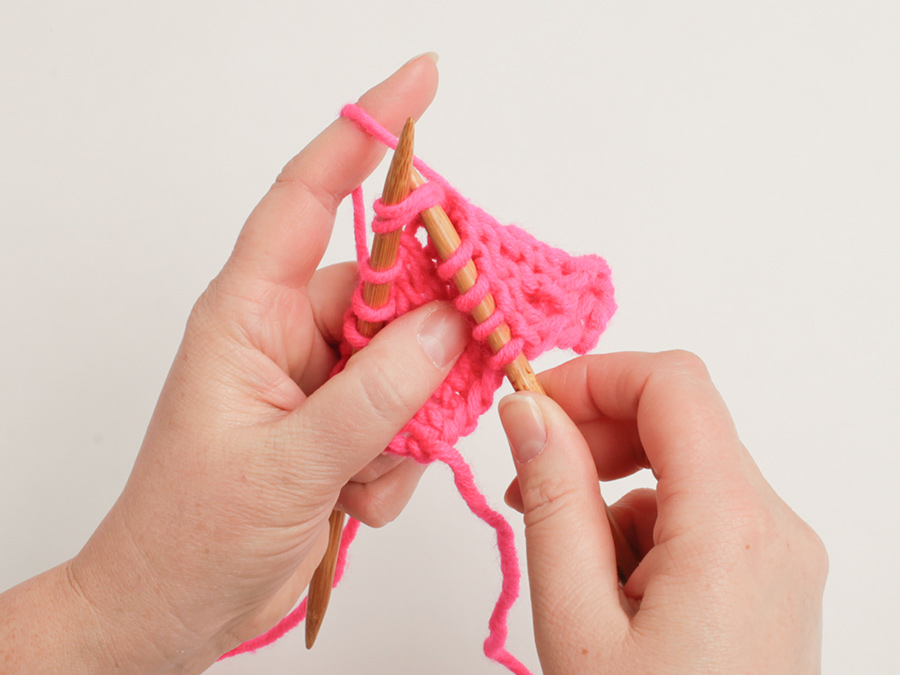








Post a comment to pattern DROPS 243-11
We would love to hear what you have to say about this pattern!
If you want to leave a question, please make sure you select the correct category in the form below, to speed up the answering process. Required fields are marked *.